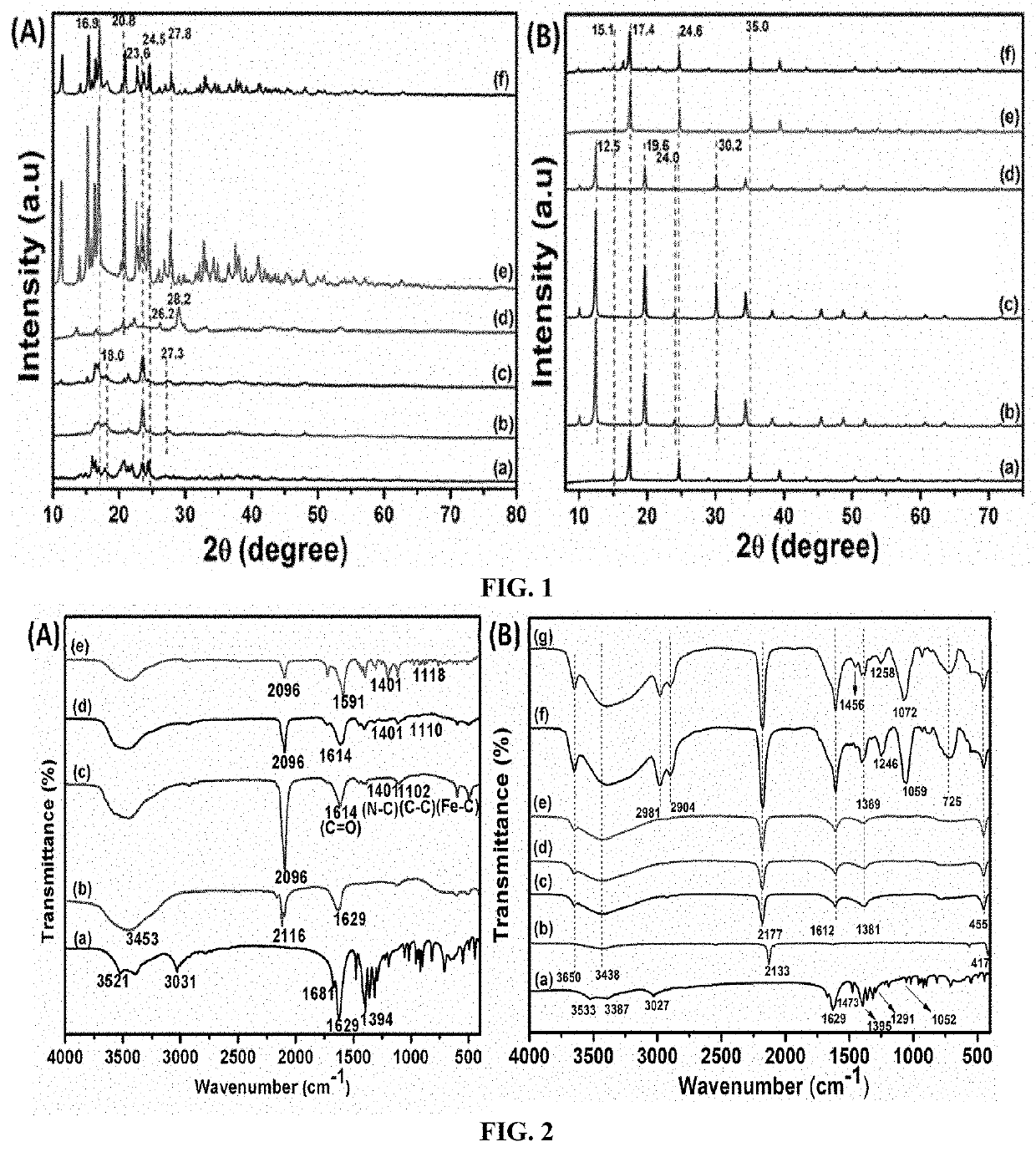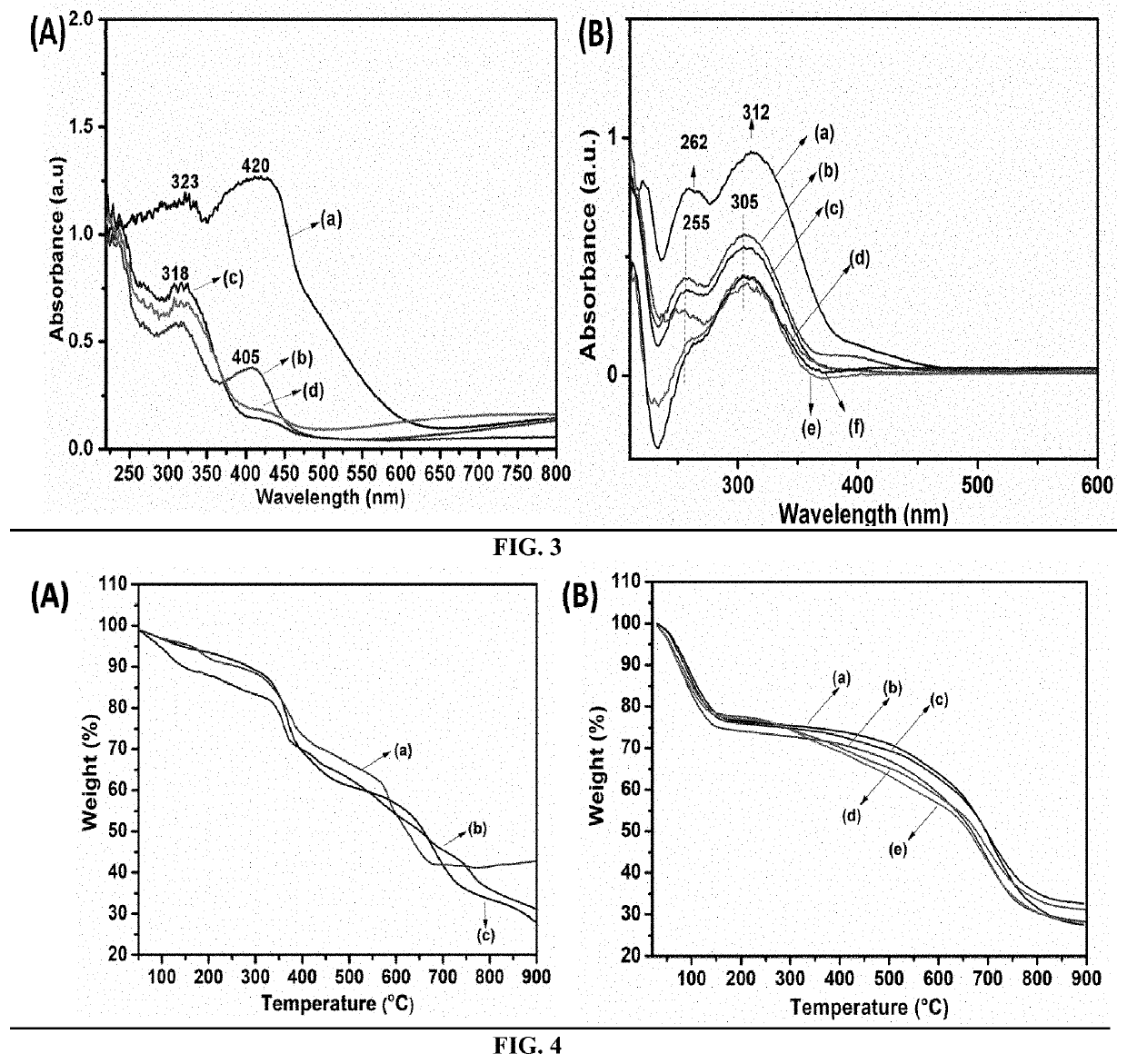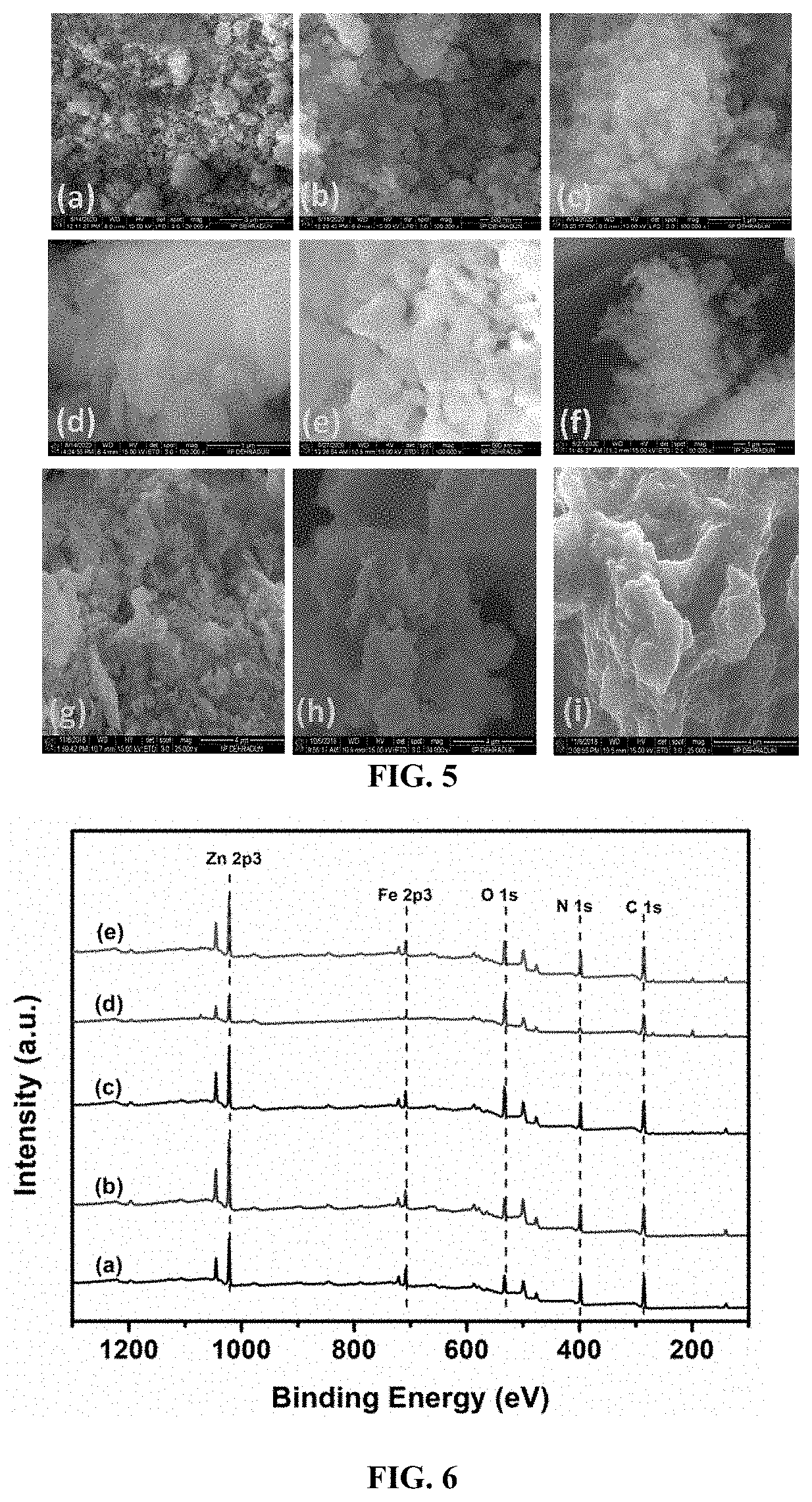Double Metal Cyanide Catalyst for the Production of Polyether Polyols and a Process Thereof
a technology of dmc catalyst and metal cyanide, which is applied in the direction of organic chemistry, chemistry apparatus and processes, iron organic compounds, etc., can solve the problems of labor intensive, difficult methods to remove dmc residues, and high cost of process operation
- Summary
- Abstract
- Description
- Claims
- Application Information
AI Technical Summary
Benefits of technology
Problems solved by technology
Method used
Image
Examples
example 1
Preparation: Zinc Hexacyanoferrate-EDTA Catalyst (DMC-1) Using EDTA as an Organic Complexing Agent (EDTA to Potassium Hexacyanoferrate Ratio as 1:1)
[0076]0.85 g of EDTA was dissolved in 10 mL of deionized (DI) water and homogenized for 10 min, and labeled as solution A. 12 g of Zinc chloride was dissolved in 23 mL of DI water and labeled as solution B. A mixture of 0.75 g of Potassium hexacyanoferrate and 10 mL of DI water was labeled as solution C. Similarly, Solution D was prepared by dissolving 0.8 g of PEG-200 in 5 mL of DI water and 0.2 mL of THF. Solution A and Solution B were homogenized together for 10 min and designated as solution E. Solution C was added to the above solution E and homogenized for 35 min at room temperature (15° C.), followed by the addition of solution D to the slurry and again homogenized for 5 min. This mixture was centrifuged at 6000 rpm for 10 min to obtain a solid cake. This solid cake was added to a mixture of 0.3 g of PEG-200 and 0.2 g of THF in 30...
example 2
cyanoferrate-EDTA Catalyst (DMC-2) Using EDTA as an Organic Complexing Agent (EDTA to Potassium Hexacyanoferrate Ratio as 5.5:1)
[0078]This example shows the preparation of a zinc hexacyanoferrate:EDTA catalyst using EDTA to Potassium hexacyanoferrate ratio in 5.5:1 (also made using the DMC catalyst preparation method).
[0079]Catalyst Preparation: The procedure of example 1 was followed, except the 5.5:1 ratio of EDTA (4.55 g) to Potassium hexacyanoferrate (0.75 g) was used instead of 1:1 at room temperature (22° C.). The resulting white solid formed was washed with DI water to remove all the un-complexed ions and dried overnight (9 h) at 70° C. under the vacuum and as described in example 1. The resulting catalyst was designated as DMC-2. Powder X-ray diffraction (PXRD) analysis of DMC-2 showed two major signals of 20 values at 16.9° and 23.6°. Elemental analysis of the solid DMC catalyst showed: Zn=33.3 wt %; Fe=16.5 wt %.
example 3
on of Zinc Hexacyanoferrate-EDTA Catalyst (DMC-3) (EDTA to Potassium Hexacyanoferrate Ratio as 8:1)
[0080]This example shows the preparation of a zinc hexacyanoferrate:EDTA catalyst using EDTA to Potassium hexacyanoferrate ratio in 8:1 (also made using the DMC catalyst preparation method).
[0081]Catalyst Preparation: The procedure of example 1 was followed, except the 8:1 ratio of EDTA (6.70 g) to Potassium hexacyanoferrate (0.75 g) was used instead of 1:1 at room temperature (18° C.). The resulting white solid formed was washed with DI water to remove all the un-complexed ions and dried overnight (12 h) at 70° C. under the vacuum and as described in example 1. The resulting catalyst was designated as DMC-3. PXRD analysis of DMC-3 showed two broad signals of 20 value at 16.9° and 23.6°. Elemental analysis of the solid DMC catalyst showed: Zn=22.3 wt %; Fe=11.3 wt %.
PUM
| Property | Measurement | Unit |
|---|---|---|
| temperature | aaaaa | aaaaa |
| pressure | aaaaa | aaaaa |
| temperature | aaaaa | aaaaa |
Abstract
Description
Claims
Application Information
 Login to View More
Login to View More - R&D
- Intellectual Property
- Life Sciences
- Materials
- Tech Scout
- Unparalleled Data Quality
- Higher Quality Content
- 60% Fewer Hallucinations
Browse by: Latest US Patents, China's latest patents, Technical Efficacy Thesaurus, Application Domain, Technology Topic, Popular Technical Reports.
© 2025 PatSnap. All rights reserved.Legal|Privacy policy|Modern Slavery Act Transparency Statement|Sitemap|About US| Contact US: help@patsnap.com



